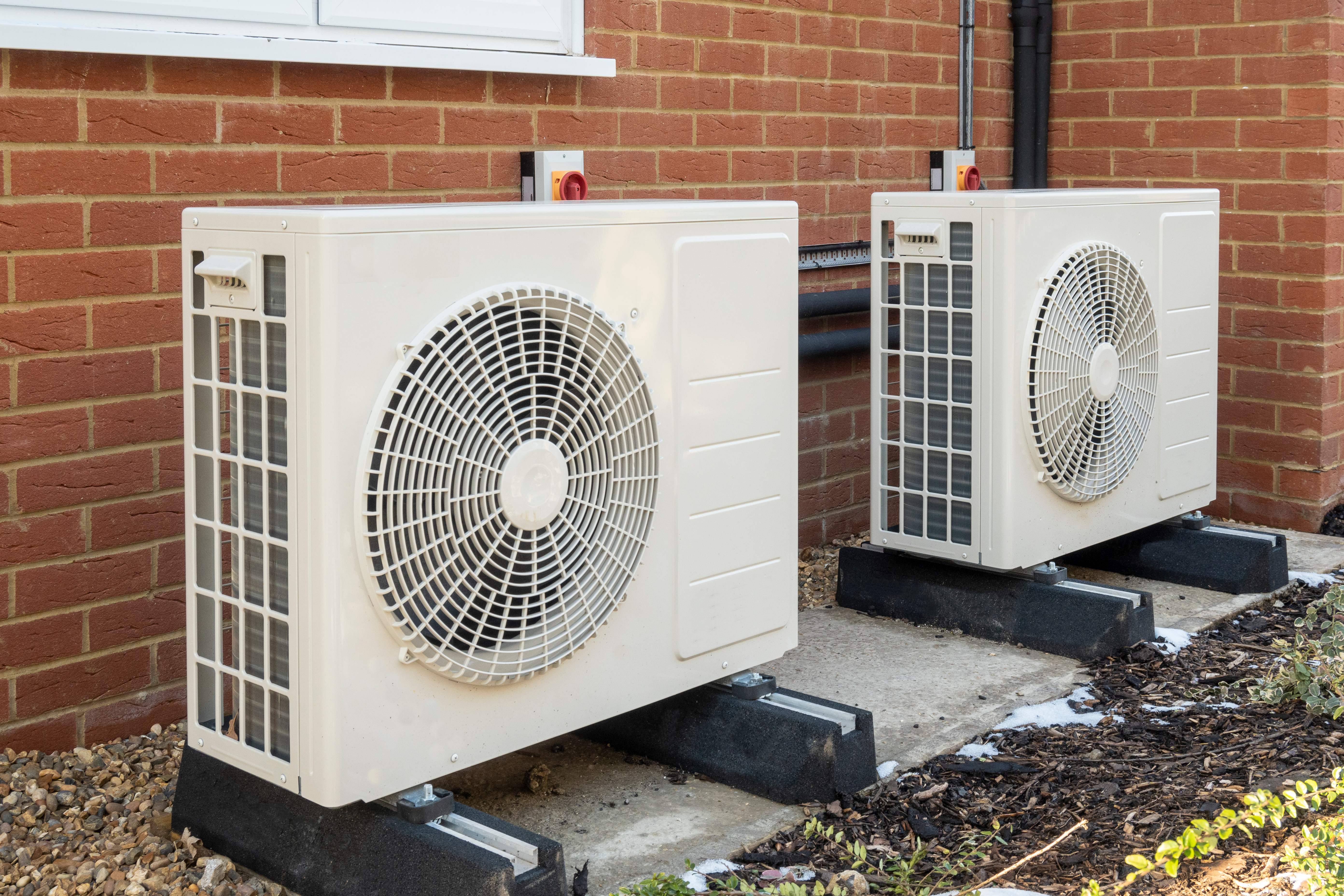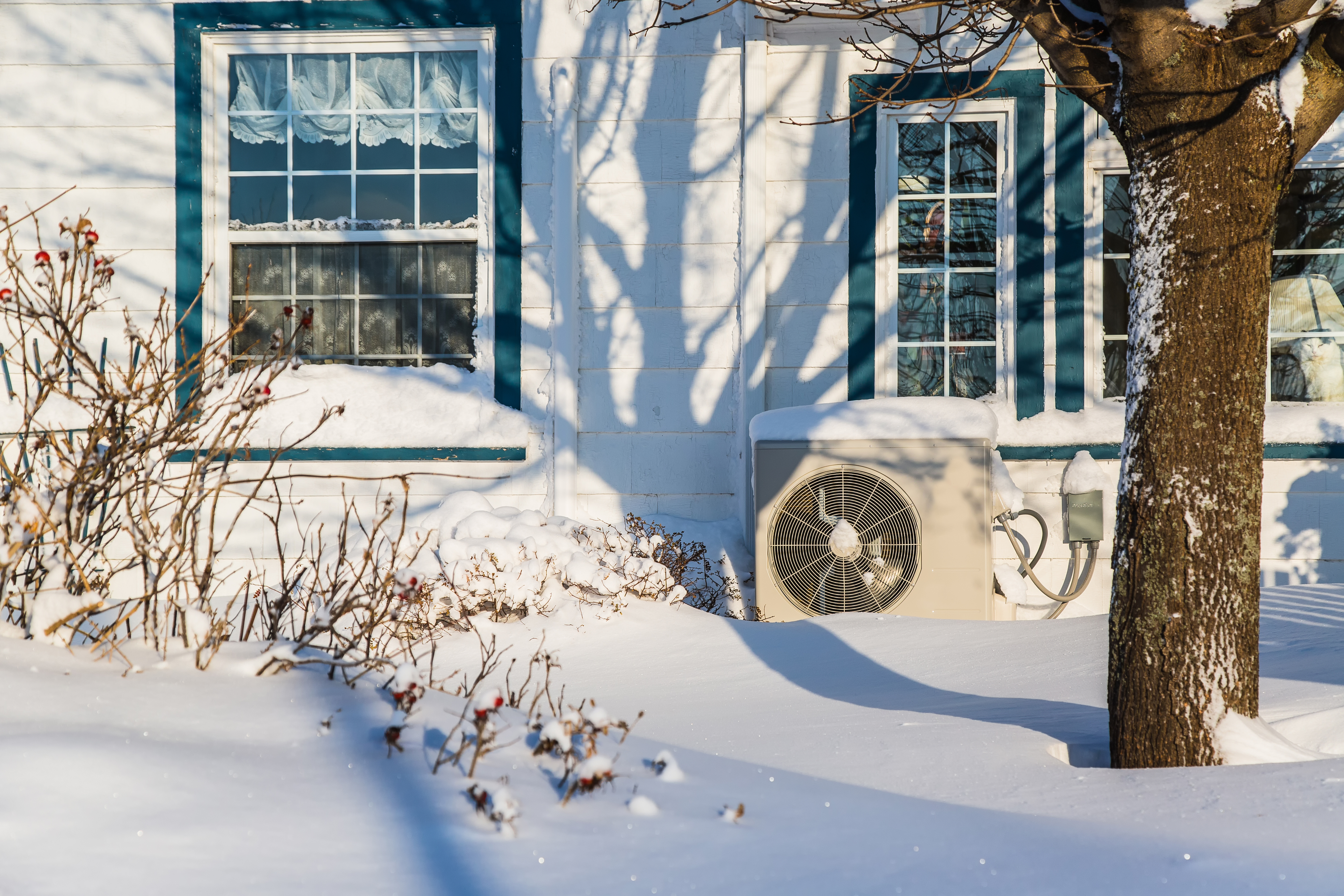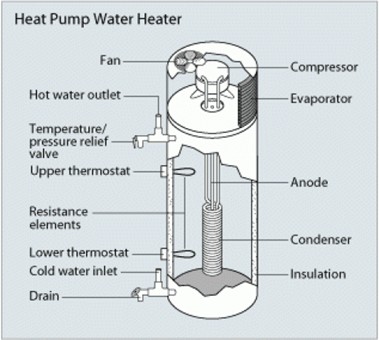Jump to Section
Heat Pump Basics
What is a heat pump and how does it work?

Heat pump technology can heat and cool a home, multi-family residence or a commercial building, heat water (Heat Pump Water Heaters), and dry clothes (Heat Pump Clothes Dryers).
Heat pumps are efficient devices that operate on the principle of heat transfer, moving heat from one place to another rather than generating heat directly like a furnace. This technology has been used in refrigerators for decades, pulling and transferring warm air out of the refrigerator which cools the space inside.
A heat pump system can complement or be an alternative to a traditional furnace or electric resistance baseboard heating. It can also provide a simple way to introduce air conditioning to a space. Overall, heat pump technology can help reduce energy use while increasing comfort. However, any significant home upgrade should first start with an energy assessment from a qualified contractor to weigh the pros and cons of an upgrade.
How do heat pumps work?
A heat pump mechanically transfers heat from outside and moves it indoors to heat your home – or in reverse to pull heat from your home to cool it down. The same concept also applies to water heating and clothes drying.
In heating mode, a heat pump extracts heat from the outside air, even in cold conditions, and transfers it indoors. In cooling mode, a heat pump works like a traditional air conditioner. It absorbs heat from the indoor air and expels it outdoors, thereby cooling your home.
Depending on the building and its setup, heat pumps can be ducted or ductless. Ducted units usually connect to a larger heat pump unit outside and use the building’s duct system like a traditional air conditioner or furnace system.
Ductless units can be installed inside the building on a wall, in-ceiling cassette, or floor unit that are connected to single smaller unit outside. Ductless units can work well for a single room, ductless buildings, and/or to augment an existing system.
There are also geothermal or ground source heat pumps (see image below). These use the relatively stable temperatures of the ground just below the surface for heat transfer, absorbing heat from the ground in the winter and moving it indoors to warm the building. In the summer, it releases heat from the building into the ground effectively cooling the building. These typically require installation of coils in the earth that are necessary for the heat transfer.
Learn More About the Types of Heat Pumps
Can heat pumps work in Wisconsin and the cold weather?
Cold Climate Heat Pumps and Dual Fuel Systems

Cold climate heat pump technology has progressed significantly over the past decade. Systems available today can efficiently heat your home even in extreme cold, with certain systems capable of operating effectively in outdoor temperatures as low as -22° F.
In colder areas of the state, or for homes that are not adequately insulated, a contractor may recommend a dual fuel heating system. In this configuration, the heat pump is attached to an existing natural gas or propane furnace. Centrally ducted heat pump systems can easily integrate with most newer furnaces, just like a central air conditioner would. In the winter, when the outdoor air cools to a predetermined temperature, the electric heat pump shuts off and the natural gas or propane furnace takes over, supplying heat as usual.
A dual fuel system allows for flexibility and confidence that heat will be there when it is needed but allows for the increased efficiency and comfort enhancements that a heat pump can provide.
Learn More about Dual Fuel Heat Pumps
U.S. Department of Energy Cold Climate Heat Pump Challenge
The U.S. Department of Energy’s Residential Cold Climate Heat Pump Challenge recently stimulated manufacturers to develop heat pumps with 100% heating capacity without using auxiliary heat and with significantly higher efficiencies at 5 degrees Fahrenheit or colder. The outcomes of the challenge have helped manufacturers introduce new products in the market:
Advantages of Heat Pumps
Heat pumps have several advantages that can make them an attractive option for heating and cooling:
- Efficiency: Heat pumps are energy efficient because they transfer heat rather than generate it. This uses less energy, which could mean potential savings on energy bills.
- Convenient: Heat pumps use electricity, meaning time and effort at filling tanks, splitting wood, or dealing with fuel shortages is not needed.
- Versatility: They can both heat and cool, allowing them to provide support in all seasons. The variety of configurations allows them to complement a current heating system, offering flexibility.
- Environmentally Friendly: Because heat pumps use less energy, they reduce greenhouse gas emissions compared to traditional heating and cooling systems.
- Healthier: A heat pump that offers both air filtration and dehumidification keeps a space cleaner and reduces the chance of mold and mildew.
- Cost Savings: Due to their efficiency, heat pumps can result in lower energy bills over time.
Despite these advantages, the initial cost of installing a heat pump can be higher than other systems, and their effectiveness can vary with the local climate. However, with advancements in technology, heat pumps are becoming an increasingly viable solution for a wide range of climates and settings.
Heat Pump Technology in Other Appliances
Heat Pump Water Heater

(Image from U.S. Department of Energy: Heat Pump Water Heaters | Department of Energy)
While heat pump technology is commonly used for heating and cooling, it also appears in other household appliances like water heaters and clothes dryers.
Heat pump water heaters work like refrigerators in reverse. Rather than transferring heat from inside and pumping it outside, a heat pump water heater pulls heat from the surrounding air and transfers it at a higher temperature to heat the water in the storage tank. This process can cause the heat pump water heater to be two to three times more energy efficient than a standard water heater.
Heat Pump Clothes Dryer

(Image from U.S. Department of Energy:
Heat Pump Clothes Dryer | Department of Energy)
Heat pump clothes dryers use heated air to remove moisture from the clothes. The saturated air is then reused by going through an evaporator, and the dry warm air is sent back to gather more moisture in a closed loop process. By using a refrigerant in the process, less electricity is used to generate heat. Also, by reusing the air, rather than releasing it, these dryers do not require ventilation and carry lower risks for fire. Heat pump dryers do create condensation that must be drained, often by running a hose to a nearby sink or drainpipe.
Heat pump dryers can be stand alone or part of Washer-Dryer combos, where the washer and dryer are all part of one machine. In this set up, the washer washes clothes in the way a normal washer does. Then the heat pump dryer takes over. A dryer will use condensing or heat pump technology to remove the moisture, usually without needing a vent. The heat pump set up works the same way as described above.
Learn More About Heat Pump Technology in Other Appliances
Available Rebate and Incentive Programs
The tables below provide links to utility and electric cooperative webpages on available heat pump rebates and incentives. Most electric providers in Wisconsin, including all investor-owned and municipal utilities partner with Focus on Energy, which is currently offering rebates on heat pumps. A list of participating utilities can be found here: Participating Utilities | Focus on Energy. Focus on Energy's own webpages on heat pumps can be found below.
Because of the partnership between Focus on Energy and Wisconsin electric providers, many of the links below will take you to the provider’s general Focus on Energy webpage, which will show the heat pump rebates along with other energy efficient rebates and incentives you may be eligible for and interested in. These utility specific webpages are valuable tools to help consumers find rebates, incentives, and information on energy efficiency offerings through Focus on Energy, as well as any other rebates and incentives that may be available through their provider.
The list of available heat pump rebates and incentives is accurate to the best of OEI's knowledge, but interested customers should double check with their provider or Focus on Energy for the specific programs, rebates, and incentives that are available, as well as eligibility requirements.
Investor-Owned Utility Rebates and Incentives
The OEI has compiled a list of investor-owned utilities currently offering heat pump rebates and incentives to customers. Find your participating utility and follow the link below to read the details about their offering. If you do not see your utility listed, the OEI recommends inquiring directly with the utility.
Cooperative Utilities Rebates and Incentives
The OEI has compiled a list of Electric Utility Cooperatives currently offering heat pump rebates and incentives to customers. Find your participating cooperative and follow the link below to read the details about their offering. If you do not see your cooperative listed, the OEI recommends inquiring directly with the cooperative. A list of Wisconsin’s Electric Cooperatives can be found here:
Wisconsin Electric Cooperative Association.
Municipal Utility Rebates and Incentives
The OEI has compiled a list of municipal utilities currently offering heat pump rebates and incentives to customers. Find your participating municipal utility and follow the link below to read the details about their offering. If you do not see your municipal utility listed, the OEI recommends inquiring directly with the utility. A list of Wisconsin’s municipal utilities can be found here:
Municipal Electric Utilities of Wisconsin.